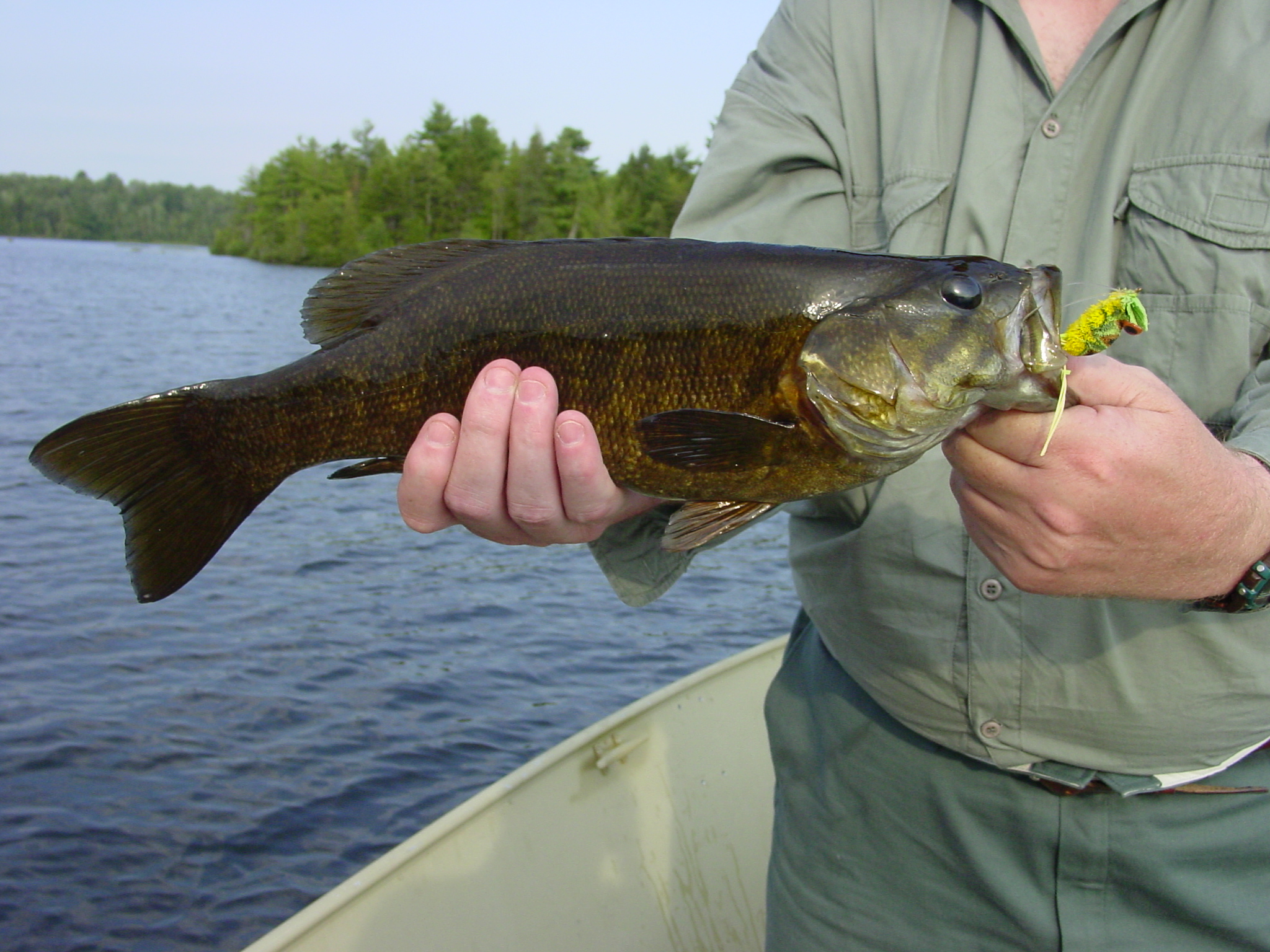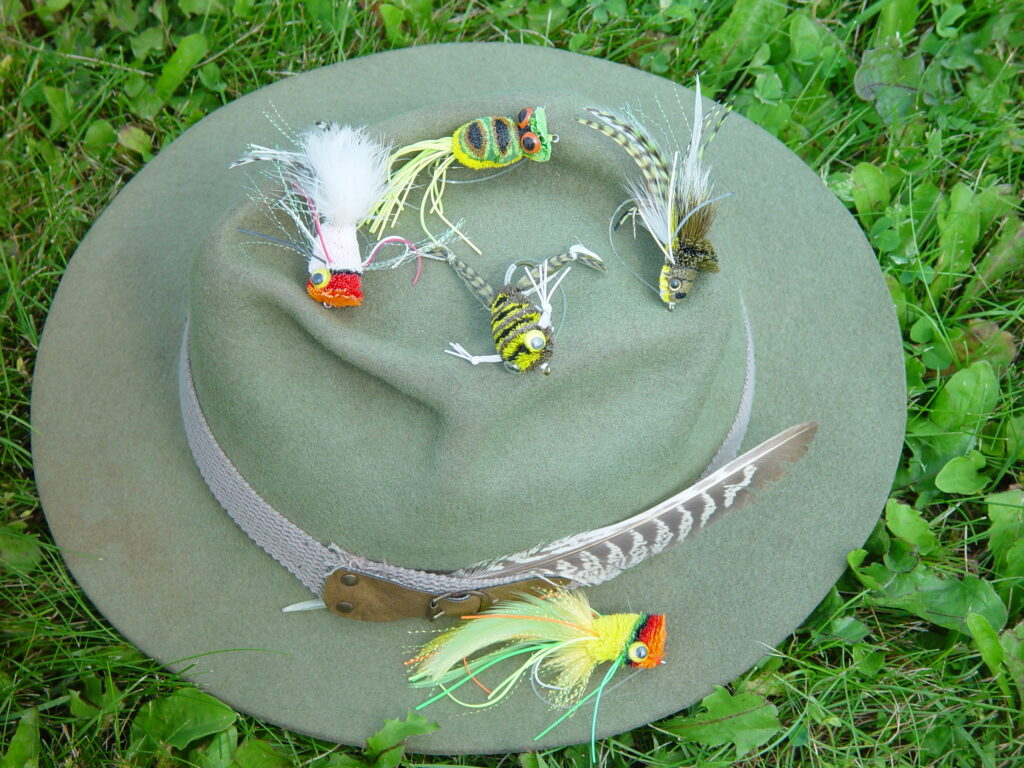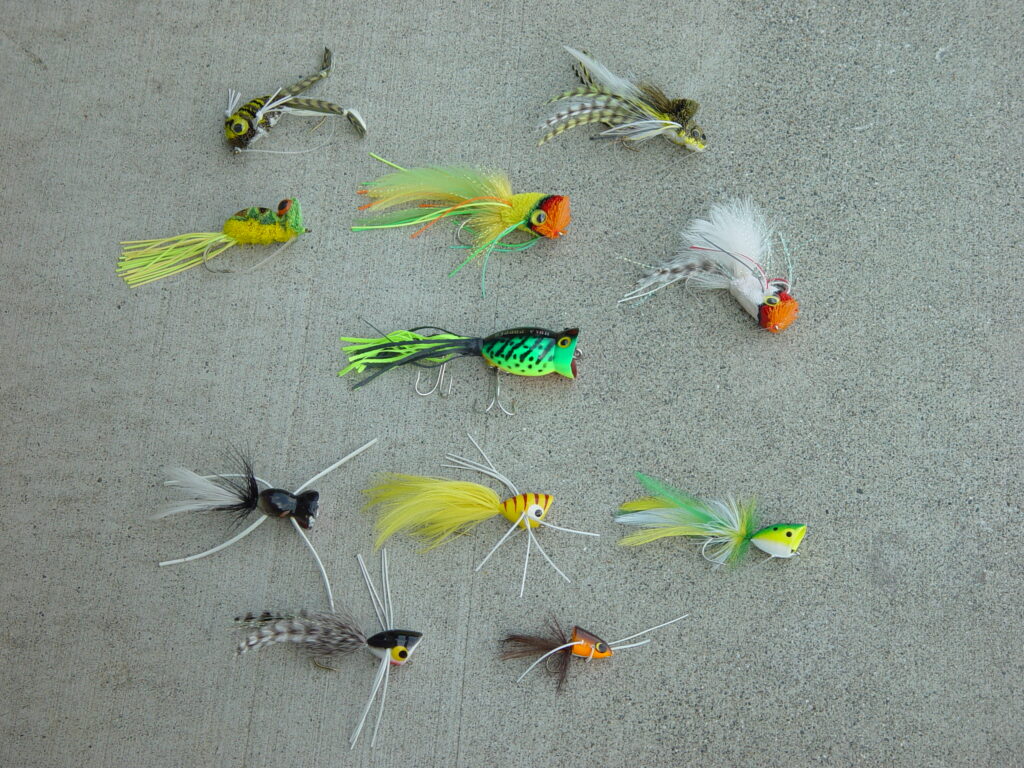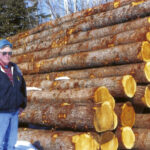
When September comes, it starts a number of hunting activities. Black bear season opens, early Canada goose hunting begins and the first moose hunting week of 2024 ends the month. Bird hunters can pursue wild turkey in zone 6, along with woodcock, partridge and ducks.
But there’s still a lot of fishing to be enjoyed, and bass bugging tops the list.
Regional smallmouth bass anglers can enjoy some of the season’s best topwater action in late August and September when the weather stays warm. Hard baits, such as floating plugs and lures that make lots of noise and surface commotion when retrieved, are dependable and very popular bass baits. For sheer fun and fight, however, nothing beats the acrobatic action of smallies on plastic poppers and hair bass bugs.
A five- or six-weight fly rod has the backbone to make long casts with bulky flies and poppers, yet is lightweight enough to really enjoy the fight of a feisty bass. Select a rod with snake guides to ensure ease and distance of casting, and use a weight forward or bass taper floating line to complement the rod weight.

Leaders should be short and fairly heavy to ensure the bulky flies roll over and lay out well. Seven-foot tapered leaders are fine, but make sure the tippet strength is at least 8- or 10- pound test in case a bass gets in the grass or a toothy pickerel grabs your fly.
Poppers are plastic or carved balsa wood surface lures with a flat or concave face that push water and make a popping or chugging noise when retrieved in short jerks. Many have rubber legs hanging from the body and a set of long, colorful feathers splayed out behind. Yellow, green and black are the three most popular and productive colors for bodies and tail feathers.
Noise and surface disturbance are the sensations that draw bass from a good distance to investigate, and the actual colors and features are what instigate smallmouth to strike.
Surface flies for bass are constructed of colored deer hair, and trimmed to resemble small insects or animals such as frogs, mice and small birds. It’s been shown that bass are less likely to reject or spit out hair flies compared to hard baits, due to the more natural texture. Black, brown, dark green and red are proven colors. Creative fly tiers even use colored permanent ink markers to create eyes, body markings and other realistic features on the hair bodies.
Although hair bugs don’t make the noise a hard popper does, they wiggle, wobble and twitch enticingly. Feather quills and fibers can be twisted and tied in knots to resemble legs, wings, tails and even antennae, to give topwater flies a more realistic motion and appearance.

Fly fishing poppers and bugs yield more consistent results when fished in fairly shallow water with plenty of cover to shelter smallies. Large rocks, stumps, submerged logs, floating weed beds, lily pads and overhanging brush offer excellent targets to plop baits near.
Sometimes less is better when tempting a bass to strike. Cast the fly to a likely piece of cover and just let it sit there until all ripples have dispersed. Then twitch or pop the bug just once, if nothing happens, do it again. Generally the surface will explode and the fly will disappear into a very large, hungry mouth, and then the fight begins.
Aroostook bass anglers face one drawback, and that’s travel distance to the nearest smallmouth waterways. After one trip, however, most find that the action far overshadows the travel time.
If a fish doesn’t strike the first couple of bumps, it’s time to strip the line in with short pulls and use the rod tip to hop the fly and guide its direction. A bass may follow the bait and take it, or perhaps the popper will attract another fish on the way back to the boat. Frequently a smallmouth will come back for a bait two or three times during one cast if it’s not hooked, and often more than one bass will strike at a fly during a retrieve. Nothing beats warm weather, topwater bass action on a fly rod.
The St. John River is Aroostook’s only smallmouth option “up North.” There are plenty of access sites, hundreds of pools and plenty of 2- to 4-pound bronzebacks to supply consistent action.
East Grand Lake always provides dependable fishing, and Pleasant Lake in Island Falls is well known for its large size smallies.
Baskahegan Lake and Hot Brook near Danforth boast moderate size fish, but lots of them.
Visit Medway via I-95 and fish the upper or lower Penobscot River for consistent action and some 4-pound-plus smallmouths. Recent weather conditions have the smallies pouncing on poppers and flies right now, and since trout and salmon fishing is a bit slow, it would be a great time to put that fly rod to good use.
Take a drive and cast some topwater flies for smallmouth bass. They’re big action.







